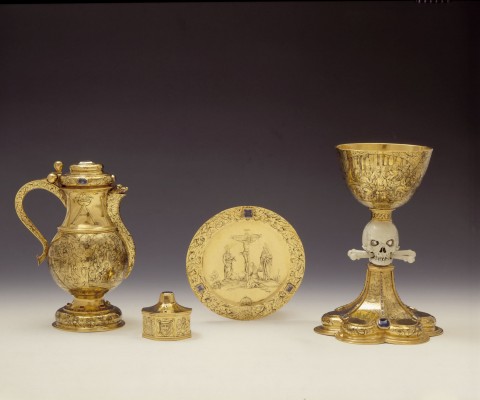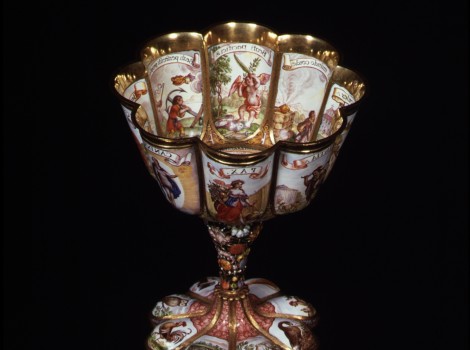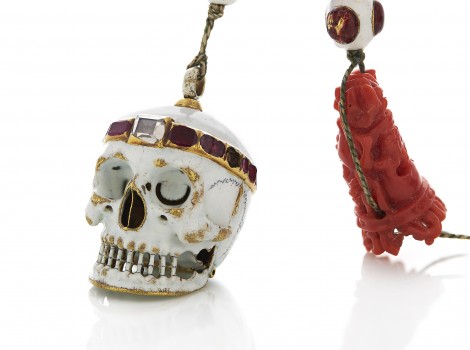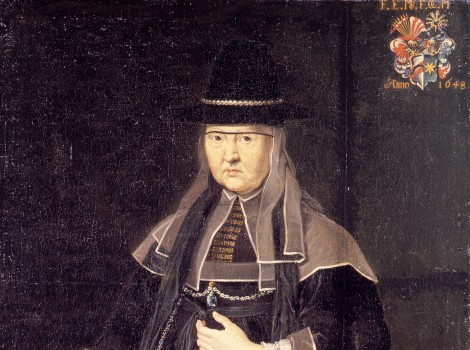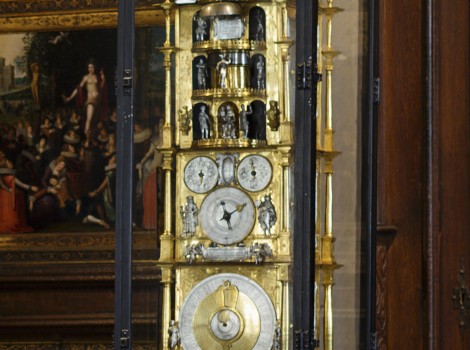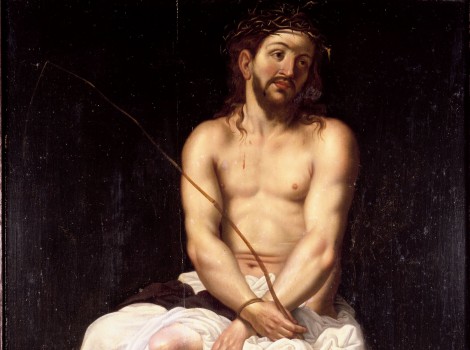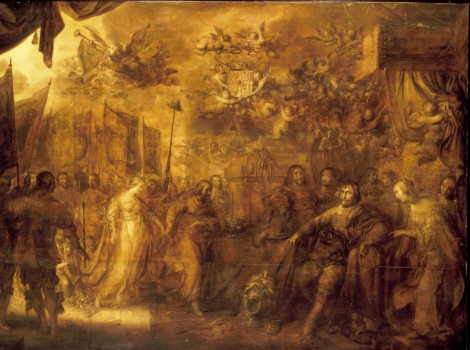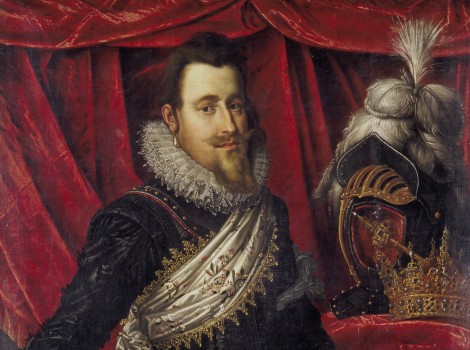Chalice
Chalice, paten, wafer box and altar jug of gold with engraving in niello, white and black enamel, sapphires and diamonds. Made for Christian IV’s sister, Duchess Augusta of Holstein-Gottorp in 1632.
The engravings on the the chalice depicts the suffering of Christ, as well as symbols for the evangelists and christian passion. Many of the motifes can be found in the illustrations of the Lutheran Strasbourg translation of the bible in 1630. The skull was a commemoration of the events at Golgatha, alledgedly the place where the cross was standing directly on top of the grave of Adam, thus symbolizing eternity for all of mankind.

 Dansk
Dansk
 English
English
 Deutsch
Deutsch

